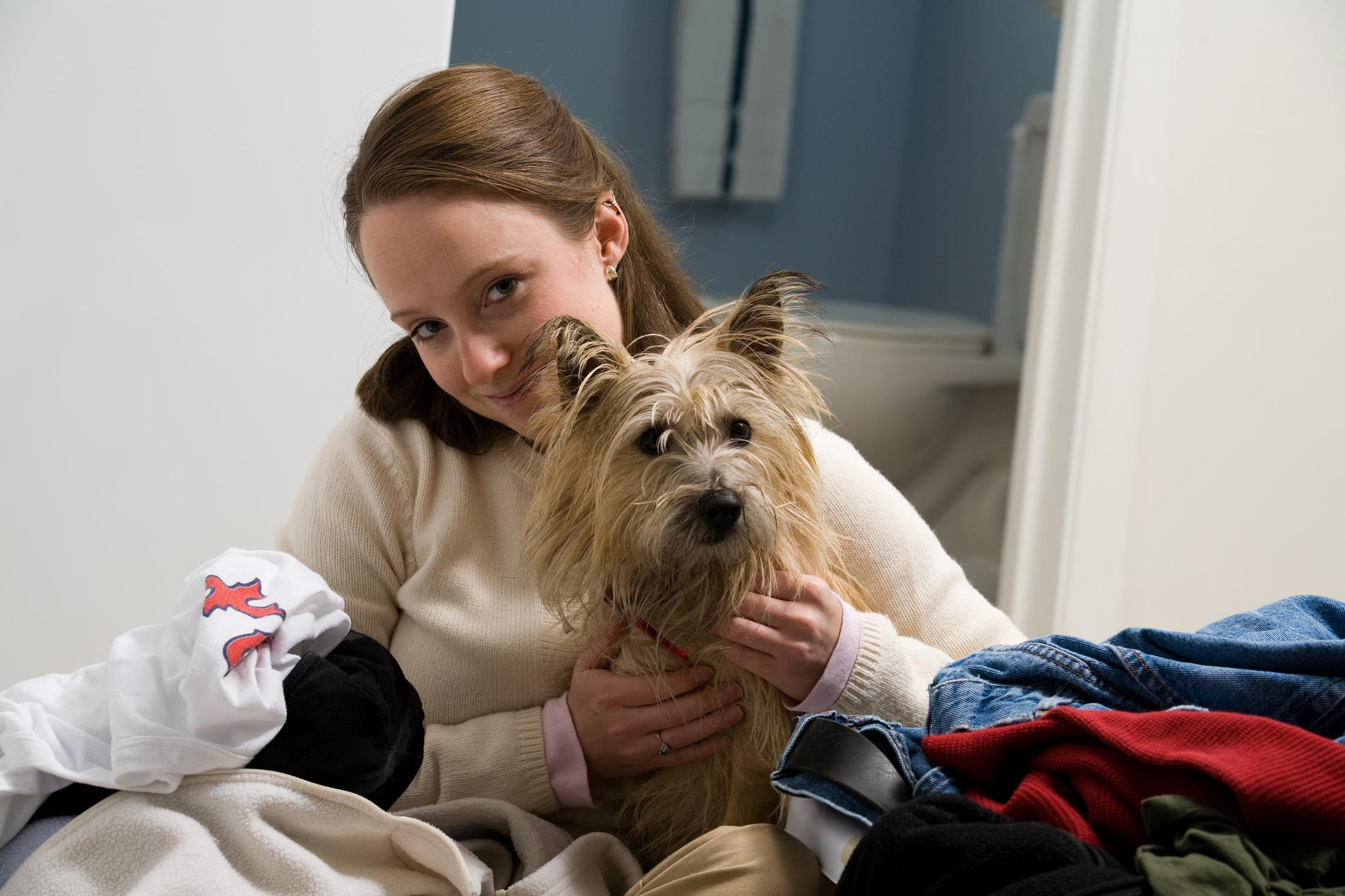Sniffing out cancer
As well as being man’s best friend, dogs are adding another accolade to their tail, as disease spotters. Lisa Salmon finds out more about the mighty Medical Detection Dogs
Dogs are well known for their superior sense of smell, which is estimated to be at least a thousand times more sensitive than humans’.
But it’s only in recent years that this skill has been honed for medical purposes, sniffing out dips in blood sugar in people with diabetes, and even detecting cancer before noticeable symptoms have developed; this is at the heart of the work of Medical Detection Dogs, a charity that trains pooches for this purpose.
It currently has 50 placed Medical Alert Assistance Dogs, of which 90% are diabetes alert dogs, and is training 10 Cancer Detection Dogs.
Dr Claire Guest, the charity’s chief executive, knows first-hand what lifesavers the dogs can be; her own Labrador, Daisy, alerted her to breast cancer.
Daisy was in training to sniff out prostate and bladder cancer at the time, when she started jumping up at Guest for no apparent reason and seemed unusually attentive and anxious. One day she bumped into Guest’s chest with her nose and it was unusually sore, so she decided to have it checked out.
“I had a very deep breast cancer which wouldn’t have been found for years without Daisy alerting me to it,” says Guest, 50, who had a successful lumpectomy and radiotherapy after her 2009 diagnosis.
Her interest in dogs’ cancer-sniffing abilities had actually been sparked years earlier, after a friend’s pooch kept licking and sniffing a mole on her leg, which turned out to be malignant melanoma.
“From the description of the dog’s behaviour, I was certain that it had smelt this change,” says Guest.
Her theories were backed up by scientific studies. Dogs can detect minute odour alterations that occur during the very early stages of medical changes.
In 2008, the first diabetes alert dog was trained, and in the same year the Medical Detection Dogs charity was formed. It has just welcomed the Duchess of Cornwall as its patron.
As well as diabetes, Medical Alert Assistance Dogs are trained to help people with conditions including nut allergies, by alerting them when a nut allergen’s present.
Canines are also being trained to help people with Addison’s disease and narcolepsy, and it’s hoped the list of conditions they can assist with will continue to grow in the future.
“There’s a huge number of other conditions that we’re potentially investigating – the number of individuals with life-threatening conditions that we could help is enormous,” stresses Guest. “We’re only just realising the difference the dogs will be able to make.”
The results of the first Medical Alert Assistance Dog placements showed a huge reduction in the dog owners’ paramedic call-outs and unconscious episodes, and much healthier blood-sugar levels in those with diabetes.
“The fact that these dogs can prevent hospital admissions is absolutely incredible, and life-changing for their owners,” says Guest. “Seeing a dog do it, and realising that it’s saved someone from a traumatic, acute, life-threatening event is quite humbling, even for us in the charity who’ve seen it before.”
For Claire, a 45-year-old from Kent who has very severe diabetes, getting her Medical Alert Assistance Dog last year, has transformed her life. She had no confidence before and was scared to go out alone in case she had a ‘hypo’ attack.
“He has not only improved the quality of my life, but my diabetes is much better controlled,” she says of her pooch, Pal. “This has had a massive impact on my renal failure for the better, and also my mental health.”
Claire was previously calling out paramedics up to four times a week. But since getting Pal – and his super low-blood sugar sniffing snout – she hasn’t needed to call them out at all.
It’s a weight off her husband, Steve’s, mind too, and he’s no longer missing as much work as a result.
“Our partnership goes from strength to strength and every day Pal amazes me with his ability to know exactly how I’m feeling,” she adds. “As a family, we cannot express our gratitude to everyone who helped make Pal the lifesaver he really is.”
Charity staff can’t, of course, tell if the dogs are aware that their actions are preventing something dangerous happening to their owners, but Guest would like to think the dogs do know.
“We train a dog to recognise a particular odour and then tell us about it and get rewarded. But I do wonder whether there’s a bit more going on – dogs look to protect us from things that are dangerous, and I don’t know whether when they’re trained to detect, they’re recognising that these things can be unpleasant for their owners and have an instinctive understanding.”
The charity doesn’t breed its own dogs – some are rescued or donated, or might already have belonged to the person living with an illness. Not all dogs are suitable to be trained up, however.
Dogs that failed to complete Guide Dogs for the Blind training, because they relied more on their sense of smell than their vision, are also sometimes used.
A large proportion of the Medical Detection Dogs are Labradors, which often have a very good sense of smell as well as a suitable temperament, but Spaniels, crossbreeds and even Yorkshire Terriers are also used.
“It’s important that the dog wants to be with the person – if it likes to be alone, it’s not going to notice any odour change from its owner,” explains Guest. “In addition, of course, they have to focus on their noses. That combination is exactly what we want – the breed is less important.”
The smell recognition training for Medical Alert Assistance Dogs can take just six weeks, and the dogs are then taught to alert their owner to problems, with signals such as nudges, licks, a push of the hand or even a simple stare. If the owner misses the signal, the dog will jump up, and get the blood testing or medical kit in their mouths and present it to them.
In contrast, Cancer Detection Dogs don’t come into direct contact with their subjects, but screen samples from donors in a training area, and are taught which ones have the odour of cancer.
They’re currently being trained to recognise cancers for which there is no reliable lab test, such as prostate, bladder or renal cancers. It’s hoped that in the future they’ll be able to detect ovarian and pancreatic cancers too.
“What we propose is that the dog would provide another test – the dog doesn’t become the doctor, but something that runs alongside other tests and might help indicate whether a person needs a biopsy,” says Guest. “It gives you a much higher predictive accuracy of diagnosis.”
It’s also hoped that for younger women, instead of mammograms, they could simply breathe into a tube – and if a dog picked up a cancer odour, the woman would go for an early mammogram.
“Had my cancer not been picked up by my dog, I wouldn’t have had a mammogram for years and my cancer would’ve been very, very serious,” notes Guest.
The cancer detection work’s still at the research and development stage but Guest has high hopes. Her dog Daisy, for example, has screened 7,000 bladder cancer urine samples, with 93% accuracy.
“The indication is that a lot of ‘invisible’ cancers aren’t invisible to dogs,” she says.
The charity relies on fundraising and donations and gets no Government funding.
Guest says: “The dogs save the NHS a huge amount of money through stopping hospital admissions and reducing medical care, and it would be nice in the future if the dogs could at least be part-funded.
“These dogs enable people to retain their independence and they don’t need carers. There are huge benefits, but it’s still early days.”
:: For more information visit medicaldetectiondogs.org.uk
Latest posts by Sally - Silversurfer's Editor (see all)
- Pocket money memories - March 14, 2025
- Belton Farm Red Fox Mac and Cheese Croquettes - March 11, 2025
- Downsizing & decluttering: A guide to simplifying your life - March 11, 2025
- Make your roof work for you: The smart way to save with solar - March 10, 2025
- Top five Fred. Olsen Cruise Deals - March 10, 2025




















